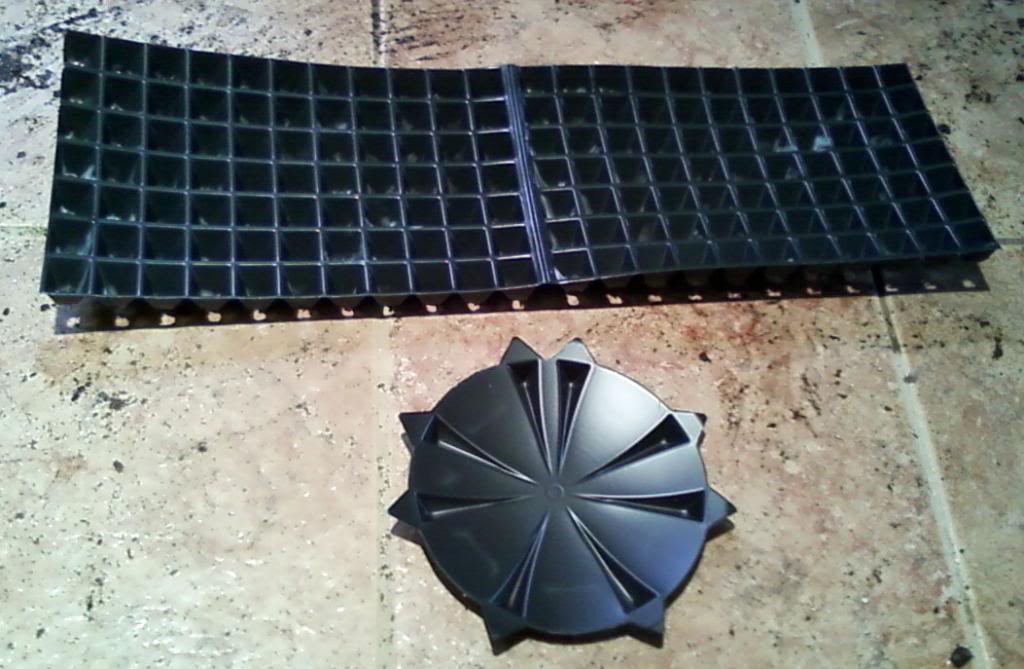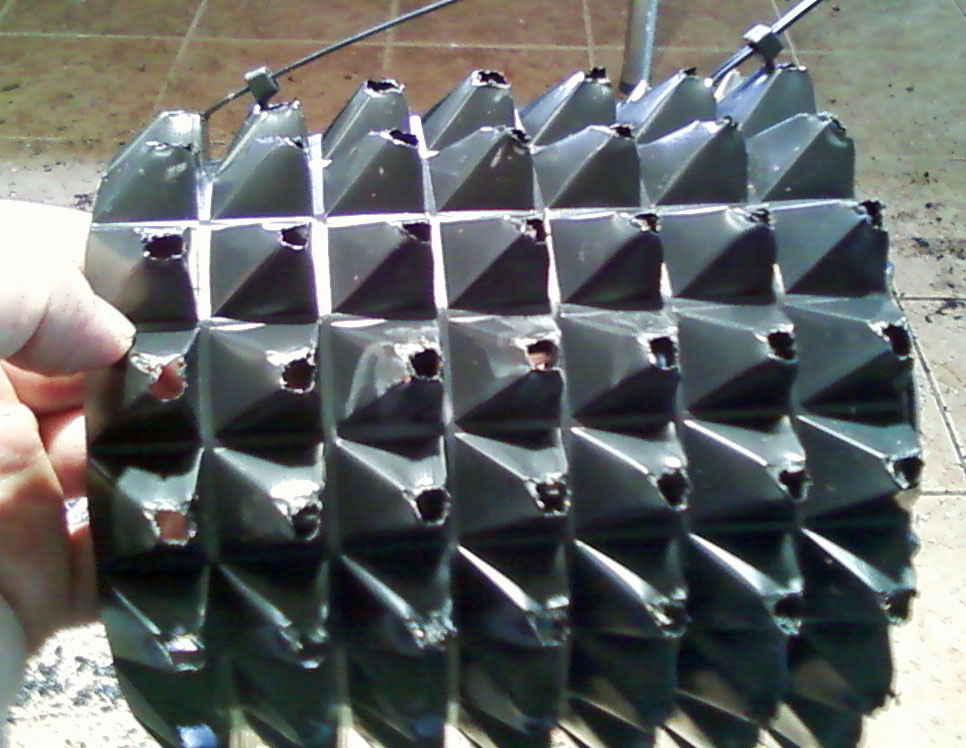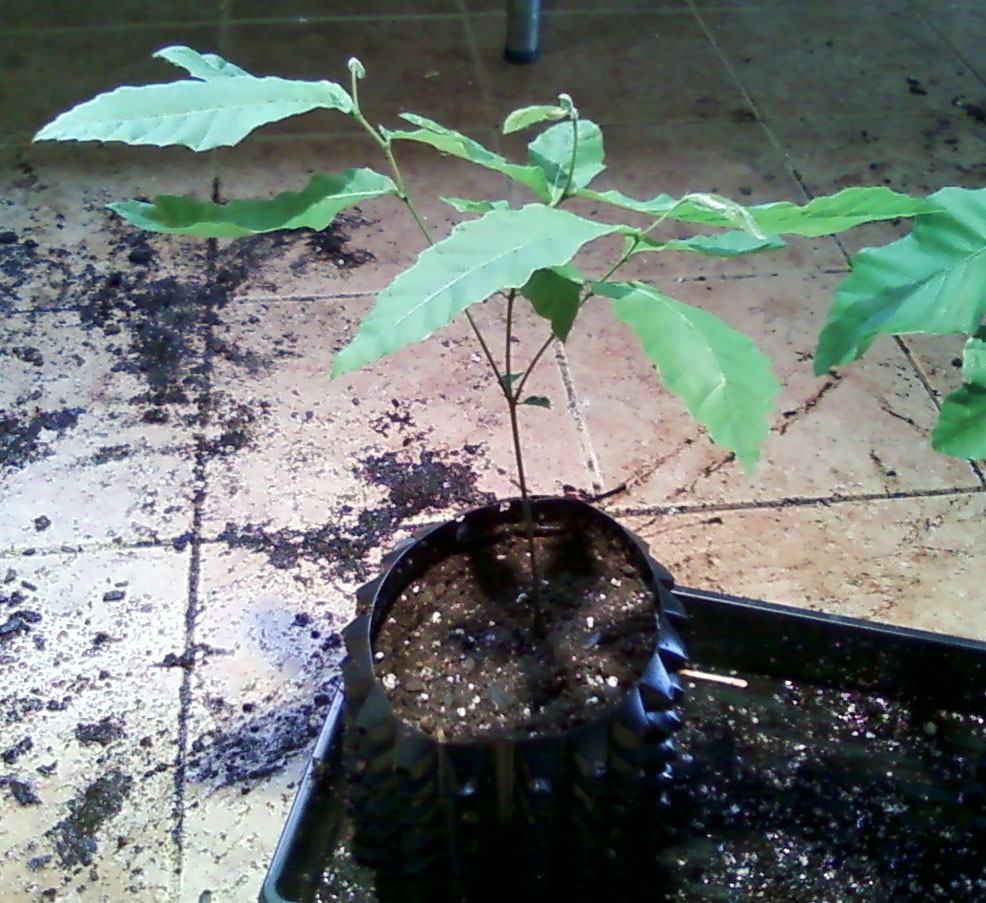yoderjac
5 year old buck +
I did a bunch of transplanting today and ran out of 5" roottrapper bags. So I opened my box of 1 gallon rootmaker posts. They are easy to assemble, but if you have not done it before, there are a few point that it is good to know before you start. I bought these wholesale so they did not come with any retail packaging or instructions, so this information may come with them if you buy them retail, but I thought I'd pass it on.
Here is the unassembled unit:

This my be different on other sized pots, but notice that the points on the bottom on the 1 gallon pot are not evenly spaced. Also note the seam that runs up and down the middle of the side of the pot.
Place the two closely spaced points on either side of the seam when you wrap the sides around the bottom. Be sure the side protrusions are angled downward toward the bottom.
When the sides are properly wrapped around the bottom, two columns of protrusions will overlap where the unit closes. Simply slide a cable tie through the lowest protrusion at the end of the overlap, reach inside the container and thread it back out through protrusion immediately above it and secure the cable tie. Do the same a the top of the pot.

Finally clip the ends of the cable ties and you are done!
Here is an example of the finished pot with a Dunstan chestnut transplanted from an 18-cell tray.

Here is the unassembled unit:

This my be different on other sized pots, but notice that the points on the bottom on the 1 gallon pot are not evenly spaced. Also note the seam that runs up and down the middle of the side of the pot.
Place the two closely spaced points on either side of the seam when you wrap the sides around the bottom. Be sure the side protrusions are angled downward toward the bottom.
When the sides are properly wrapped around the bottom, two columns of protrusions will overlap where the unit closes. Simply slide a cable tie through the lowest protrusion at the end of the overlap, reach inside the container and thread it back out through protrusion immediately above it and secure the cable tie. Do the same a the top of the pot.

Finally clip the ends of the cable ties and you are done!
Here is an example of the finished pot with a Dunstan chestnut transplanted from an 18-cell tray.

Last edited:
